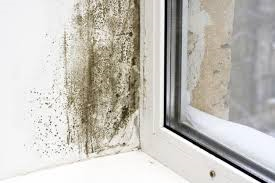Are you Having Problems With Damp?
22 October 2014 – Newsletter

With the colder weather coming in, now is the time to prevent any damp problems from occurring in your home or rental property.
Understanding what causes damp in the first place is the first step to combating the numerous issues and problems that may subsequently arise with your tenants. Ventilation is absolutely key and also a very clear understanding with your tenants that it is not permitted to dry wet clothes within the property as so many do, instead of using the washer/dryer provided. Clauses to this effect should be included in any Lease that you use and property inspections will help ensure that your tenants are abiding by their lease.
Damp Problems
Ireland isn’t “green” for no reason and we all now how much rain we get every year so it is no surprise that damp can become a big problem in houses and apartments…
In many cases, damp can be due to poor maintenance and lack of ventilation. There are 3 main causes of damp within the home, all of which can be prevented and remedied.
Condensation
The most common cause of damp in the home is condensation which is caused by elevated humidity levels and moisture in the air. This excess moisture can lead to a build up of mould growth which emit spores and is linked to respiratory problems and also unsightly dark patches on walls and ceilings, window frames and furniture.
We are all familiar with streaming windows, especially in winter and colder periods, and this is usually the first signs of a condensation problem. It is one of the problems Able Property see most in rented houses and apartments
If condensation is ignored over a long period of time, damp patches on walls will appear and mould will occur. As people become more “energy” conscious and look for ways to conserve energy and money by insulating more and fitting double glazed windows, the lack of ventilation increases the humidity within.
So why ventilate?
Unless air is allowed to circulate, winter and summer, it is only a matter of time before condensation starts and mould occurs. Apart from health risks over a prolonged period, mould looks awful, ruins your décor and is sometimes impossible to remove from soft furnishings and clothes.
How do you prevent damp and condensation?
Heating should be used during the winter to prevent damp generally but simple measures can be taken to prevent condensation then arising:-
- Even if it is cold, always have a small window open to allow air to circulate
- Don’t dry wet clothes on a clothes horse within the property, always use a dryer or hang clothes on a line if you have one
- Always use the extractor fan in the kitchen when cooking and also use lids on pots to reduce steam. If there is a window in the cooking area, it should also be opened while cooking
- Some bathrooms and toilets don’t have a window so make sure the extractor fan is always turned on
- Extractor fans are “timed”, don’t reduce the minutes as the timer had to do its job
- Even if you use the extractor properly, leave a bathroom door slightly ajar as a hot shower can produce a lot of steam
If you own a rental property it is advisable to make your tenants aware of the causes of condensation and what they can do to avoid it. Able Property always includes this information in their leases.






